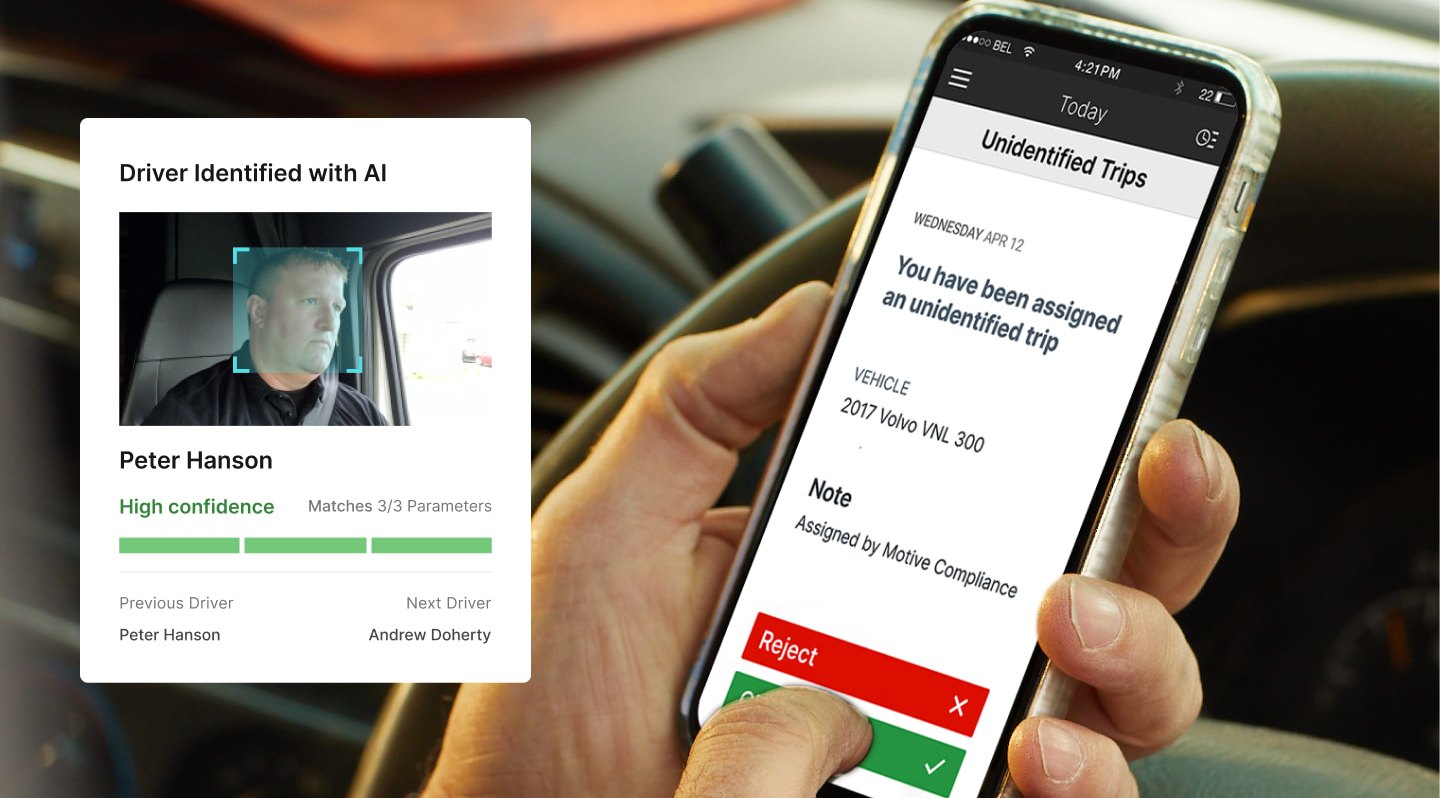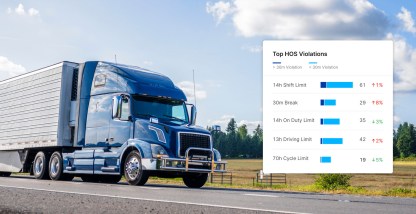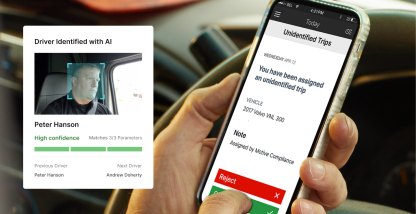Driver logs have come a long way from a spiral notebook. While electronic logbooks are now mandated, they’re changing — and improving — how fleets do business.
In the past, some drivers would stop by their fleet headquarters with several weeks’ worth of handwritten logs. An office worker would be left to interpret their handwriting and meticulously compare every entry against receipts and orders.
Today’s driver logs and electronic logbooks are doing more than simply helping drivers manage their hours-of-service (HOS) compliance. ELDs generate a wealth of data that includes details about each driver’s trip, total hours worked, distance traveled, hours of service, and inspection reports. More sophisticated ELDs, like Motive’s fleet management solution, can automate compliance while managing special driving categories in the ELD mandate that allow drivers to keep driving time off their logs.
Thanks to modern driver logs and electronic logbooks, fleets and drivers can:
- Save time
- Increase productivity
- Improve compliance with federal and state mandates
- Take a more proactive approach to risk management
In this guide, we’ll review what today’s driver logs and electronic logbooks can do, how to manage and edit them, how fleet managers can get the most out of their investment, and current compliance standards.
What are driver logs and electronic logbooks?
An electronic logging device (ELD) system, also known as an electronic logbook, includes a device that connects to the electronic control module of a vehicle’s engine. By connecting to a diagnostic port, the ELD automatically tracks a vehicle’s drive time and stores the record of duty status (RODS) and other data.
By improving HOS tracking and reducing violations, the U.S. Federal Motor Carrier Safety Administration (FMCSA) estimates electronic logbooks will reduce annual incidents each year, including:
- 1,844 fewer crashes
- 562 fewer injuries
- 26 fewer deaths
But the benefits go beyond safety. Many fleets report that more complete and accurate driver logs and electronic logbooks are improving their CSA scores, which can lead to lower insurance costs. Likewise, electronic logbooks can prove a driver was not over HOS limits when involved in a crash while providing details about the crash itself. When paired with dash cam footage, an electronic logbook can even exonerate a driver by showing what really happened.
With more complete driver logs and electronic logbooks, drivers can easily ace roadside inspections. After all, roadside inspections go smoothly when drivers are organized with readily available information. And since electronic logbooks can alert drivers before they reach their HOS limit, drivers have ample time to plan, stop, and safely park — minimizing violations.
How to edit driver logs and electronic logbooks
Motive’s electronic logbooks are designed for drivers, making day-to-day usage faster. That includes making it easy to identify and fill gaps in a driver’s log. Fleet managers can view each driver’s log, confirm any missing details with the driver, then update the electronic logbook to ensure the information is accurate and complete.
For example, the Motive Driver App automatically prompts drivers to update any unsigned logs and unidentified driving events. And it’s easy to insert a past duty status if a driver forgets to do so.
Drivers can also keep driving time off their driver logs when allowed by FMCSA rules, such as yard moves or personal conveyance. This helps drivers ensure they don’t exceed HOS limits while performing permitted activities.
See what’s new in the Driver App.
How fleet managers can use driver logs to improve operations
With better driver logs and electronic logbooks, fleet managers have the visibility they need to keep the entire fleet on track. The Motive Compliance Hub can reduce time spent on ELD compliance by up to 50% while helping reduce HOS violations by up to 50%. Together, the Compliance Hub and Fleet App can help you:
- View driver logs and on-the-go duty status.
- Resolve form and manner errors.
- Spot vehicle and asset defects in inspection reports.
- Minimize violations by alerting drivers and managers before they occur.
- Identify which drivers need coaching to reduce their CSA scores.
- Gain visibility into trends over time, such as types of violations and driver behavior.
- Reduce the costs of violations.
The Motive Compliance Hub uses AI to automatically match unidentified trips with recommended drivers and notify fleet managers of the recommendation, right in the Fleet Dashboard. This helps eliminate administrative time sorting through records.
Similarly, fleets are now using data from driver logs and electronic logbooks to monitor CSA scores. Motive’s fleet management solution can pair each driver’s CSA score with Motive’s DRIVE risk score to fully understand each driver’s risk profile. This helps fleet managers prioritize which drivers may benefit from safety coaching or reward top-performing drivers.
What to know about driver log and electronic logbook rules and exemptions
FMCSA first published the ELD mandate in 2015. Most carriers had to comply by December 2019. Canada’s version took effect for federally regulated carriers on January 1, 2023. A few provinces are still phasing in enforcement for transport within their jurisdictions, while Alberta and Saskatchewan do not currently intend to add an ELD mandate to their own provincial regulations.
The ELD mandate applies to most commercial motor vehicles involved in interstate commerce if they:
- Weigh more than 10,001 pounds
- Transport hazardous materials in a quantity that requires placards
- Transport nine or more passengers for compensation
- Transport 16 or more passengers (not for compensation)
A few ELD exemptions do exist. For example, drivers who operate on a “short-haul” basis within a 150-air-mile radius of their work reporting location do not need to comply. Drivers who complete eight or fewer long-haul jobs per month are also exempt from the ELD mandate, though they must still comply with record of duty status (RODS) requirements and log their hours manually or via an AOBRD.
Vehicles manufactured before the 2000 model year are exempt from the ELD mandate and must log their RODS manually or via an AOBRD. “Covered farm vehicles” that haul agricultural machinery or supplies to or from a farm and ranch also have some exemptions, as do CMVs making emergency fuel deliveries or transporting materials to or from a Motion Picture Association of America-affiliated production site.
Finally, Wisconsin and California do not currently require ELDs for intrastate commerce, but both states are in the process of drafting their own versions of the mandate.
Simplify your driver logs and electronic logbooks to streamline compliance
Electronic logbooks can unlock improved efficiency and productivity for your entire fleet. Learn how Motive can help you automate ELD compliance and take a proactive approach to risk management. Request a demo to get started.









